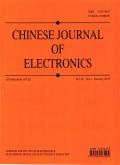A Millimeter-Wave Sensor and Differential Filter-Paper-Based Measurement Method for Cancer Cell Detections
IF 3
4区 计算机科学
Q3 ENGINEERING, ELECTRICAL & ELECTRONIC
引用次数: 0
Abstract
This paper introduces a novel, easily-designed millimeter-wave sensor and an innovative liquid sensing method, both suitable for biological sample detection and cancer cell discrimination. The sensor, composed of coplanar waveguides with load resonators, features a centrally symmetric stepped-impedance resonator that creates a detection region, capable of achieving multiple transmission poles and zeros. This resonator is responsive to the equivalent dielectric constant of the surrounding space, mirroring the electromagnetic properties of the tested sample via the resonant frequency and notch depth. The proposed sensing method uses filter paper to characterize a liquid's electromagnetic properties by comparing the S-parameters of dry and wet filter paper loaded onto the sensor. This method, an alternative to traditional microfluidic channels, allows all planar microwave/millimeter-wave solid dielectric constant sensors to robustly detect liquid materials. Applied to biomedicine, the design enables the sensor to generate multiple transmission peaks in the 20–60 GHz range, thereby facilitating discrimination of various cancer cell culture media and suspensions. Compared to traditional biochemical methods, this approach significantly reduces cancer detection costs and offers new avenues for label-free, real-time detection.基于毫米波传感器和差分滤光纸的癌细胞检测方法
本文介绍了一种新型的、易于设计的毫米波传感器和一种创新的液体传感方法,它们既适用于生物样品检测,也适用于癌细胞鉴别。该传感器由共面波导和负载谐振器组成,具有中心对称阶跃阻抗谐振器,可创建检测区域,能够实现多个传输极点和零。该谐振器响应周围空间的等效介电常数,通过谐振频率和缺口深度反映被测样品的电磁特性。所提出的传感方法通过比较加载在传感器上的干滤纸和湿滤纸的s参数来表征液体的电磁特性。这种方法是传统微流体通道的一种替代方法,允许所有平面微波/毫米波固体介电常数传感器可靠地检测液体材料。该设计应用于生物医学领域,使传感器在20-60 GHz范围内产生多个传输峰,便于对各种癌细胞培养基和悬浮液的鉴别。与传统的生化方法相比,该方法显著降低了癌症检测成本,并为无标签、实时检测提供了新的途径。
本文章由计算机程序翻译,如有差异,请以英文原文为准。
求助全文
约1分钟内获得全文
求助全文
来源期刊

Chinese Journal of Electronics
工程技术-工程:电子与电气
CiteScore
3.70
自引率
16.70%
发文量
342
审稿时长
12.0 months
期刊介绍:
CJE focuses on the emerging fields of electronics, publishing innovative and transformative research papers. Most of the papers published in CJE are from universities and research institutes, presenting their innovative research results. Both theoretical and practical contributions are encouraged, and original research papers reporting novel solutions to the hot topics in electronics are strongly recommended.
 求助内容:
求助内容: 应助结果提醒方式:
应助结果提醒方式:


